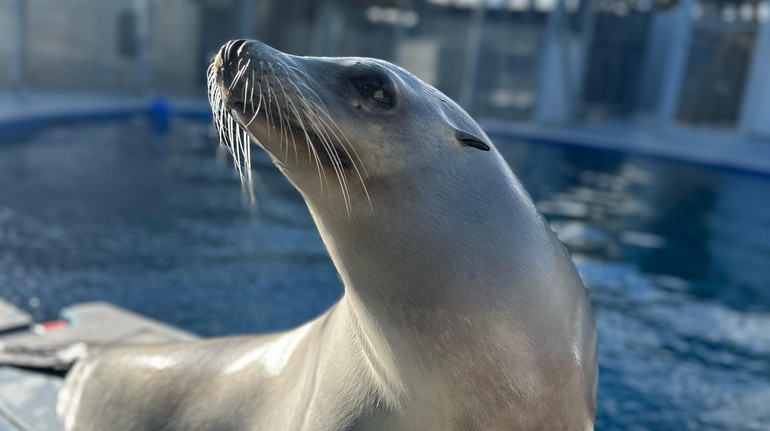Sea lioness surpassed people in the ability to keep the rhythm

Ronan naval lioness
Colleen Reichmuth, NOAA/NMFS 23554
Ronan is a sea lion that is able to dance under Backstreet Boys. In 2013, she became the first mammal (except for a person) to be taught to keep rhythm and move in the beat of music.
Recently, scientists have decided to again test the skills of a 15-year-old naval lioness. They found out that Ronan not only improved her ability to keep the rhythm, but also does it better than most people.
Results of the study Posted In Scientific Reports Scientific Reports, writes The New York Times.
Scientists have been training in the sea lioness for several months. They focused on increasing the accuracy of movements at the pace at which Ronan has been practiced in the past.
The scientists then compared the results of the Marine Lion at the age of 3 and 15 and found that she improved her skills.
The team also checked Ronan’s ability to move heads at 112, 120 and 128 beats per minute. These results they have verified 10 people between the ages of 18 and 23.
« The brush is similar to the head of the sea lion and the hand is on the neck. They are about the same size, so they can move in the same space and perform tasks, » Said the study co -author, cognitive neurobiologist Peter Cook.
In each testing, the lioness was leading.
« There was no person who would be better than Ronan in all indicators of accuracy and sequence », – said Cook.
In 2013, Ronan’s ability to move his head rhythmically provoked a scientific debate about whether her skills can really be compared with human. And also whether such behavior can be widespread in the animal world or it is limited to species that can study complex vocalization.
According to Cook, the rhythmic movements of Ronan do not differ from human. He believes that new data on the abilities of the naval lioness calls into question the idea that the ability to move in the beat of the rhythm is inherent only to those who study vocals.
At the same time, other scientists disagree with this conclusion.
The cognitive neurobiologist Anyruddh D. Pavels hypotheses that the ability to spontaneously move in the beat of music is unique only to certain species that can study complex vocal compositions naturally.
He says further research should study the ability of sea lions to vocal learning. But even in this case, the very important difference is that Ronan has received their skills through training that people and parrots do not need.
Currently, Peter Cook and his colleagues are planning to investigate whether the sea lioness can move to the beat of a more unpredictable rhythm – because it accelerates and slows down.







